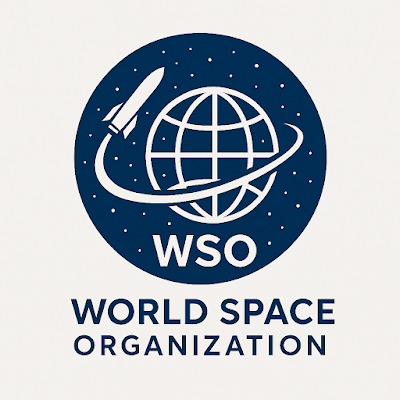What if series: Part - 12
• What if we creat like WSO- World Space Organisation?
• Imagine a world where NASA, ISRO, ESA, JAXA, CNSA, and all other space organizations work together. No competition. There are no secrets. There is only one goal: to explore space and help the Earth together. Does this sound like a dream? Maybe. However, it is a possible dream – one that has the potential to forever alter humanity's future.
• In this blog, we shall discuss:
Why Space Agencies Are Important?
What happens if they all work together?
How can this assist the Earth?
What challenges might they face?
Is it actually possible?
Let's take it step by step.
Why do we have so many space agencies?
• Today, there are over 70 space agencies worldwide. Here are a few of the major ones:
NASA (USA)
ISRO (India)
ESA (Europe)
CNSA (China)
JAXA (Japan)
Roscosmos (Russia)
• Each agency is doing incredible job. They launch rockets, research the universe, deploy satellites, and even visit worlds such as Mars. However, they typically work separately. Some governments share information, but full collaboration is unusual.
What if they all worked together?
• Now imagine this: One team comprised of the best scientists, engineers, and astronauts. Shared data, research, and missions. One large budget rather than several little ones. No rivalry, simply cooperation. This might produce spectacular consequences.
Possibilities if They Work Together
• Let's discuss about what could happen if all space agencies work together. ---
1. 🌏 Solving Earth's problems from space.
When space agencies collaborate, they can launch satellites like:
Track climatic change.
Monitor natural disasters.
Improve agriculture and water management.
Help with communication and education in rural locations.
For example, a global satellite network can assist predict floods and save thousands of lives.
2. Accelerate human missions to Mars and beyond.
• Currently, every country is preparing its own Mars expedition. But what happens if they combine their technology and money? Humans could arrive on Mars faster. Bases could be made with the greatest materials from each country. The mission will be safer and more powerful. We might even visit Jupiter's moons, Saturn's rings, or outer space together.
3. Better Space Stations
• Instead of creating separate space stations, several countries can collaborate to create a single robust international space city, similar to a floating laboratory in space. More space for science. Increased safety More individuals can live and work there. And, certainly, one day, space tourism will be real and affordable!
4. Shared knowledge and innovation.
• Each country has something unique: India offers low-cost space technology. USA has advanced tools. Japan is excellent at robots. Europe has deep research. China has rapidly expanding missions. Now think if all of these abilities came together! Innovation will accelerate 10 times faster, and technology will advance like never before.
5. Promoting Peace and Unity on Earth.
• Working together in space can foster friendships on Earth. Space can serve as a bridge, not a battlefield. A united global space agency can bring nations closer together, much as the International Space Station (ISS) did for Russia and the United States. It will convey a strong message.
"We're all human." Earth is our home. "Let us rise together."
What are the challenges?
• Of course, this is a lovely idea—but it is not easy. Some actual problems include:
1. Political differences. Some countries face trust challenges. They may not want to reveal secrets or collaborate with past adversaries.
2. Budget and Power Sharing. Who will lead? Who will pay what amount? These are difficult questions.
3. Technological Secrets. Some governments keep their space technology private for military purposes.
4. Fair credit. Everyone wants to be recognized for their work. Sharing credit can be tricky. However, obstacles are not the end. With the correct mindset, anything is possible.
Is it practical?
• Yes, it is. In reality, we already have examples.
International Space Station (ISS NASA, Roscosmos, ESA, JAXA, and other organizations built it, and it has been operating quietly for almost 20 years.
• Artemis Accords More than 30 countries have signed an agreement to work together on Moon missions.
• ISRO and NASA missions. India and the United States have collaborated on initiatives such as NISAR (a satellite designed to study Earth). These little measures demonstrate that global teamwork in space is achievable. We now need to take larger moves.
Why This Matters to Humanity ?
It's not just about space. It is about life. Our earth is tiny and delicate. We face major issues such as climate change, war, poverty, and food scarcity. Space can assist solve these problems, but only if we collaborate. A unified space agency is more than just a science fantasy; it is a human necessity.
How Can This Happen?
Here are a few practical steps:
1. Increase trust among space agencies through transparent meetings.
2. Launch collaborative missions with common purposes, such as disaster tracking.
3. Provide open data on climate, satellites, and space weather.
4. Establish a single worldwide forum, similar to the United Nations' space council.
5. Involve students and scientists worldwide in collaborative initiatives. And perhaps one day, astronauts from several nations will join together to plant an Earth flag on Mars.








.jpeg)


0 Comments